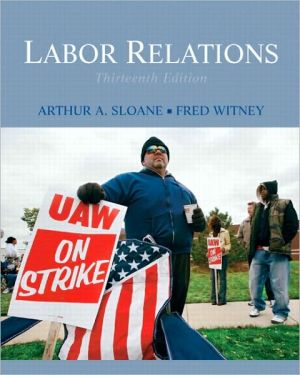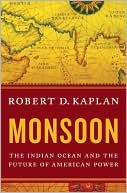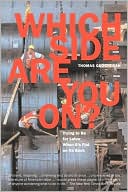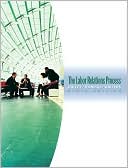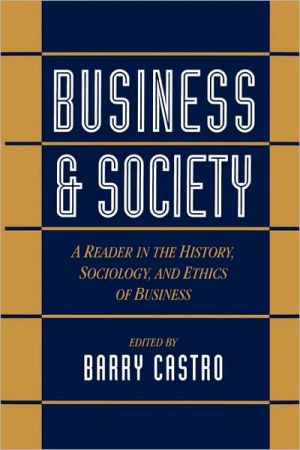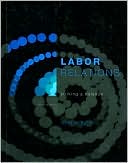Labor Relations
Labor Relations, 13/e, the most accurate, readable, timely, and valuable book of its kind on the market, provides readers with a basic understanding of unionism in its natural habitat and a fundamental appreciation of the union-management process. It focuses on the negotiation and administration of labor agreements, and emphasizes the more significant bargaining issues. The 13th edition includes new material and an extensively revised and updated bibliography. For vice-presidents and...
Search in google:
Labor Relations, 13/e, the most accurate, readable, timely, and valuable book of its kind on the market, provides readers with a basic understanding of unionism in its natural habitat and a fundamental appreciation of the union-management process. It focuses on the negotiation and administration of labor agreements, and emphasizes the more significant bargaining issues. The 13th edition includes new material and an extensively revised and updated bibliography. For vice-presidents and directors of labor relations, union presidents, and others who are full-time labor-management professionals for either managements or unions.
PREFACE: \ Preface\ Where are no prerequisites to this book beyond an interest in labor-management relations. It has been designed to serve as an aid to all readers who desire a basic understanding of unionism in its natural habitat. With such a thrust, however, the volume focuses on certain areas, necessarily minimizing the treatment of others.\ Labor Relations brings in, for example, sufficient economic material to allow a fundamental appreciation of the union-management process and stops at that point. Throughout, it has tried to make the various topic treatments short enough to be interesting while at the same time long enough to do justice to the subject. On the other hand, it in no way restricts itself to what is commonly described as collective bargaining. Its focus is on the negotiation and administration of labor agreements, with emphasis on the more significant bargaining issues as they now appear between the covers of the contracts. And these topics cannot profitably be studied in isolation. Labor relations can best be viewed as an interaction between two organizations—management and the labor union—and the parties to this interaction are always subject to various, often complex, environmental influences. Only after the reader gains an understanding of the evolving management and labor institutions, and only after the environment surrounding their interactional process has been appreciated, can he or she attempt to understand bargaining itself in any satisfactory way.\ The book consequently begins with a broad overview of the general nature of the labor-management relationship as it currently exists in the United States(Part I). It then moves to a survey of the historical, legal, and structural environments that so greatly influence contractual contents and labor relations behavior (Part II). Finally, it presents a close examination of the negotiation, administration, and major contents of the labor agreement itself (Part III).\ Through description, analysis, discussion questions, minicases (many of them with ethical dimensions) and selected arbitration cases drawn from the authors' own experiences, understanding of all these aspects of labor relations will, hopefully, be imparted.\ This tenth edition, the first one written since Fred Witney's 1999 death, is marked by many changes—mainly additions, although all of the chapters have been given some streamlining and the new volume is essentially the same in size as its predecessors. Even in the four years since the ninth edition, developments in the field have warranted the inclusion of new material on card checks, labor's recent turn to different and more aggressive leadership, fast-track presidential authority and unions, major developments in public policy in the past few years, and the dues rebate controversy. I have also enlarged upon the prior treatment that Fred and I gave managerial health care cost containment, arbitration, the GM-UAW-Saturn relationship, and miscalculations in bargaining. Tax-deferred retirement savings plans are additionally now dealt with, as is the topic of the AFL-CIO and cyberspace. And the discussion of a host of other topics has, of course, been given a significant updating.\ Many new visual aids are included also, as are an extensively revised bibliography, an amended mock negotiation problem, and a glossary.\ Nonetheless, I have exercised self-restraint in the rewriting. Only changes that can be defended on the grounds of general improvement of Labor Relations have been incorporated. I have always firmly believed in the old Puritan dictum that "nothing should ever be said that doesn't improve upon silence," and also share with the late Calvin Coolidge the conviction that "if you don't say anything, no one will ever call upon you to repeat it."\ ACKNOWLEDGMENTS\ When a book has reached the stage of a tenth edition, it stands indebted to so many people that individual acknowledgment is futile. As in the case of the prior editions, students, friends from the ranks of both management and labor, and colleagues at other educational institutions have offered constructive suggestions and many of these have been implemented. Rita M. Beasley, who cheerfully and competently provided many helpful services on behalf of this volume, does deserve a special citation, however. And so, for the same reasons, do the University of Delaware's Myrt Werkheiser and Nancy Sanderson.\ Nor can the contributions of five outstanding Prentice Hall staffers—Managing Editor Jennifer Glennon, Production Editor Keri Jean, Managing Editor Judy Leale, Editorial Assistant Kim Marsden, and Acquisitions Editor David Shafer—go unrecognized. Most of all, I appreciate the support that Louise P. Sloane, my wife, gave me throughout the process: Everyone else will have to be satisfied with the acknowledgments; she alone may also share in the royalties.\ ARTHUR A. SLOANE
Pt. ISetting the stage1Ch. 1Organized labor and the management community : an overview1Pt. IIThe environmental framework45Ch. 2The historical framework45Ch. 3The legal framework83Ch. 4Union behavior : structure, government, and operation133Pt. IIICollective bargaining193Ch. 5At the bargaining table193Ch. 6Grievances and arbitration238Ch. 7Wage issues under collective bargaining275Ch. 8Economic supplements under collective bargaining306Ch. 9Institutional issues under collective bargaining333Ch. 10Administrative issues under collective bargaining365Pt. IVArbitration cases411Case 1A loaded handgun and suspected cocaine in her purse411Case 2Fighting on the employer's premises413Case 3Abusive language toward a supervisor416Case 4Overlooked for an unanticipated vacancy419Case 5Employees on medical leave421Case 6Blame for a major accident423Case 7Subcontracting of a packaging line installation425Case 8Discharge for fraud426Case 9"Continuity of skills"428Case 10An antinepotism policy429Case 11A laid-off glass worker432Case 12Alleged insubordination436Case 13A laid-off senior employee437Case 14The creative reporter441Case 15Ten days to learn442Case 16The discharge of Matthew B. Flynn444AppMock negotiation problem447
